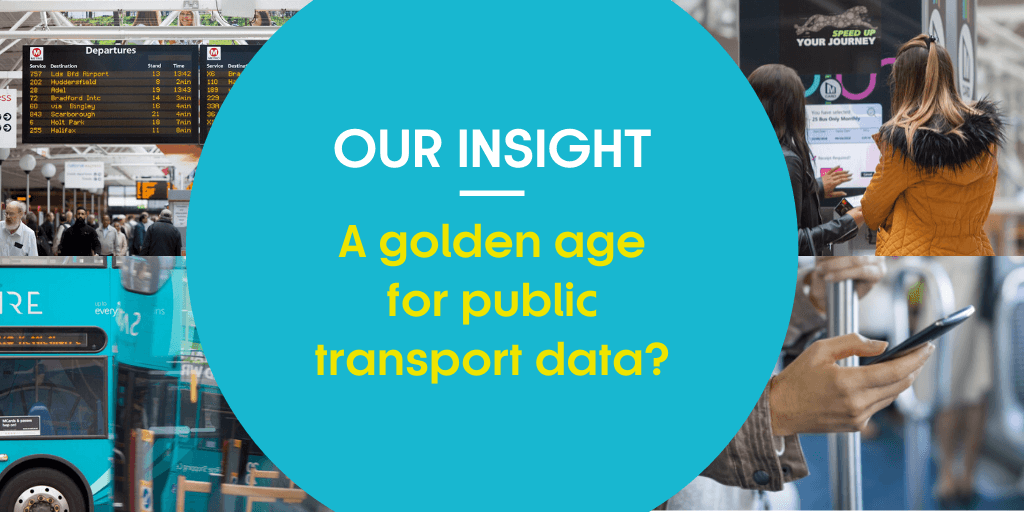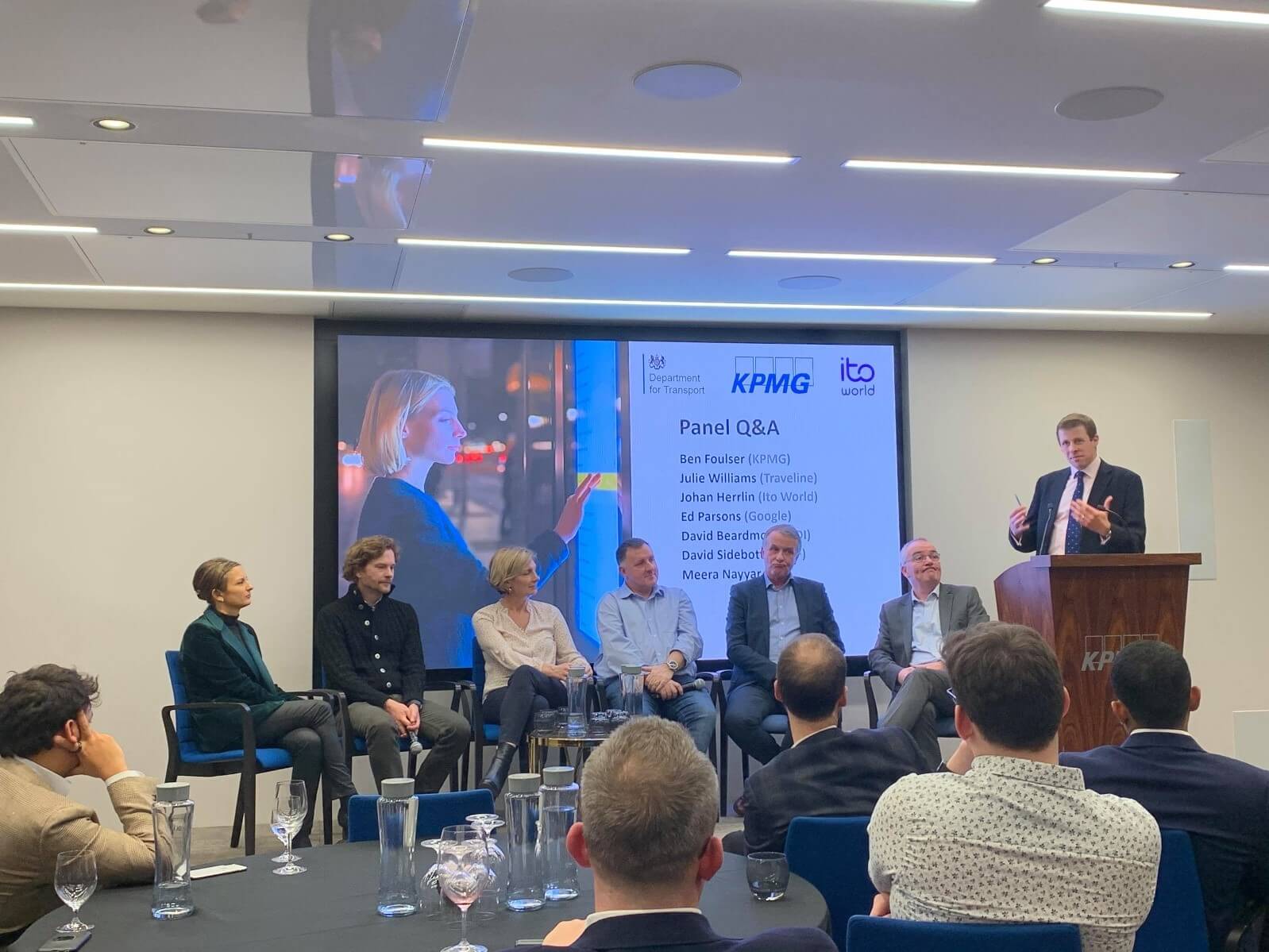In this Insight our Customer Information Strategy Manager, Richard Mason, explores why the launch of the Bus Open Data Digital Service marks the start of an exciting time for both people working in the public transport data industry and for passengers across the North.

Not so long ago the world of local authority delivered passenger information services and that of international tech giants like Google, Citymapper and Moovit seemed to be in separate galaxies. But times are changing.
At the end of February, the Department for Transport (DfT) officially launched its Bus Open Data Digital Service with an industry round-table hosted by Baroness Vere MP. Transport for the North was in attendance alongside bus operators, leading journey planning app providers, other mobility information companies and open data experts.
The industry-leading names and variety of organisations in the room was testament to the fact that the Government’s Bus Open Data programme is putting England at the forefront of public transport open data in Europe and around the world. Developers were excited by the new data sets that bus operators will soon be required to publish openly. This presents a fantastic opportunity for the developers to enhance the information they provide to their customers to help them get from A to B.
I was were there to learn and share more about the innovative work we at Transport for the North are doing through our Integrated and Smart Travel programme to transform the passenger information offer in the North of England.
Buses were of course a main topic of conversation. As Baroness Vere proudly said, following recent government attention on the industry, ‘the time of the bus is now’. For too long passengers on bus have been unsatisfied with the quality and consistency of journey information. It has proved a barrier to bus use for those who do not have to. It’s a complex problem and there are undoubtedly some examples of excellence from individual operators, but as an industry, bus has been slower than rail to move towards digital information consolidated at a network level. Government intervention through legislating the open publication of new data sets – including timetables, vehicle location and fares – will help drive change and innovation in this space forward. It is a welcome move.
Buses are an integral part of our local transport networks so its exciting to see a concerted effort to put them at the centre of a bold, national programme of digital transformation. It is important that authorities support bus operators, especially smaller ones, to meet these heightened expectations. Transport for the North are doing just this with our Fares Data Build Tool which will help operators publish fares in the required NeTEx data exchange standard. This type of support will help protect vital services – particularly in rural areas where often bus provides the only way to travel for those without access to a private car – by bringing buses into the digital age.
Other public transport modes and future mobility services were also important talking points. We need to raise customer information standards across all modes, improve accessibility for all customers, and prepare for integration with pay-as-you-go bikes, e-scooters, car-clubs and demand responsive services. These latter ideas might seem more like the realm of sneaker-wearing start-ups. But there is a role for government and local authorities to play in improving data quality, encouraging common data standards and joining solutions together in a way that meets the needs of our growing towns and cities, particularly to encourage travellers to use public transport rather than private car.
As Ed Parson from Google said, we are all fighting ‘the battle of convenience’. If Uber and other demand-responsive, private vehicle hire companies can provide their services at the click of a few buttons, why would the passenger choose to navigate the complex world of public transport? It is important that local authorities find a response to fight the challenges of road congestion, air quality and climate change.
I also believe that it is important the public sector engages with private-sector developers about how we can build trust and develop truly mutually beneficial partnerships. If the developers use the data facilitated by local authorities – including Transport for the North’s upcoming SIRI-SX Disruption Messaging feed – what insights can they provide back about when, where and how is it benefiting customers? For the DfT, Transport for the North and our local authority partners we need this to track that we are spending public money wisely and also, frankly, to prove than an open data approach can work outside of London and other heavily regulated sectors. We have already started having these conversations with developers and look forward to seeing what comes of them.
The ecosystem of transport data creators, facilitators and users in England is not a large one. Historically I think it is fair to say the different groups have been somewhat disparate and not great at talking to each other. The Bus Open Data round-table could be a watershed moment. It was fantastic to get a sense of the genuine energy within the sector – I hope this continues. For Transport for the North, it was satisfying to have it affirmed that we are well positioned to capitalise on this and bring about improvements for passengers across our region. Open public transport data offers many opportunities for us and our local transport authority partners. I am excited to see where the journey takes us.
